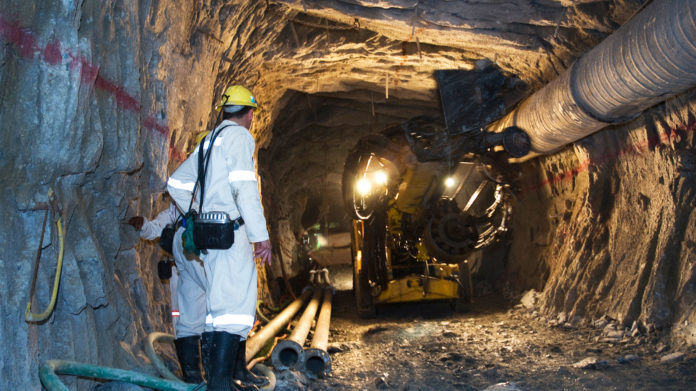
HARMONY Gold was on course to produce up to 1.3 million ounces of gold for its 2021 financial year after reporting improved output in the six months to end-December.
Gold production for the six months was 745,347 oz following a 38% year-on-year lift in December quarter production. The improvement in quarterly production was owing to the incorporation of Mponeng and Mine Waste Solutions, assets purchased for $200m from AngloGold Ashanti in October.
“The integration of Mponeng and Mine Waste Solutions went according to plan and contributed both to the quality of the ounces produced and overall production,” said Peter Steenkamp, CEO of Harmony Gold in a production update today.
Mponeng mine and Mine Waste Solutions have contributed 103,525 oz to production since they were acquired, the company said.
Steenkamp said the return to work following the hard lockdown in March and April last had been “a remarkable job”. Full production at Harmony only resumed from August as the company had hundreds of migrant employees stuck behind neighbouring country borders.
Production for the 2020 financial year came in at 1.2 million oz.
Harmony will provide an update on its annual guidance – which will include the projections from Mponeng and Mine Waste Solutions – at its results presentation on February 23.
It is expected to produce much improved interim period cash flow generation year-on-year whilst attention will also fall on its plans for potential dividend payments, balance sheet deleveraging permitting.
The group said in November it would nearly triple operating free cash flow in the first quarter. It registered R1.8bn in free cash flow for the three months ended September compared to operating free cash flow of R603m in the June quarter.
Net debt as of September 30 was R3.25bn, up from R1.4bn end-June which included $200m raised in cash through the issue of shares for the purchase of Mponeng and Mine Waste Solutions.
Adjusting for the increase in shares, the firm’s net debt to earnings before interest, tax, depreciation and amortisation (EBITDA) as of September 30 was 0.5x compared to a ratio of 0.8x end-June.











